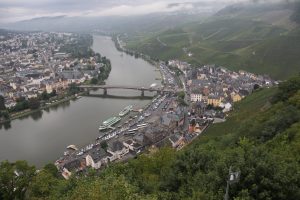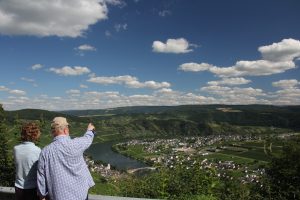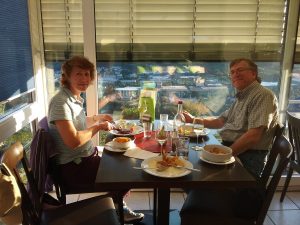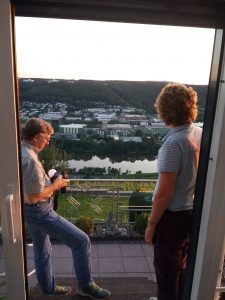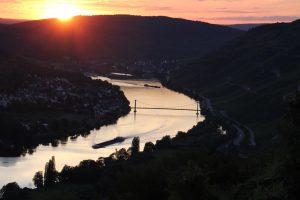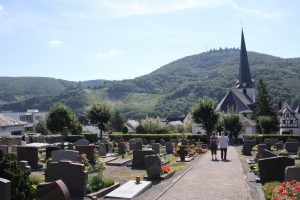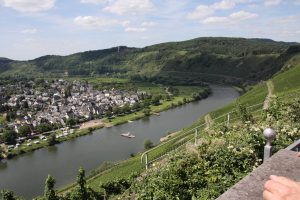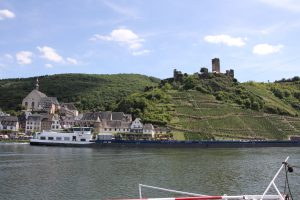Rather than try to find some kind of theme today, I’m just going straight to continuing the narrative of what we did in Germany. Yesterday I left off at Burg Eltz, in a steep valley only a mile or so north of the Mosel as the crow flies, but quite difficult to find. At one point, we had to stop a bicyclist to ask directions.
Looking now at the map, I think I know what happened. Despite being so close to the river, the terrain is such that there is no direct route to the castle from there. We turned off the river road at Müden – follow along! – and almost immediately there was a problem. We got turned around in the steep village streets and came out again my the river. We flagged down a passing fire department vehicle and got squared away to get out of town and up into the Eifel plateau.
Wilfried, who had a general understanding of the area, kept saying, ‘We’re close’ but the road didn’t go in the right direction. We went through the villages of Möntenich and Pillig, then cut across country towards Münstermaifeld. This is where we talked to the bicyclist.
in Münstermaifeld we finally saw another sign to the castle, and took the road through Wierscheim. Soon we were at the castle parking lot. A pleasant walk of about half a mile soon brought us this view:
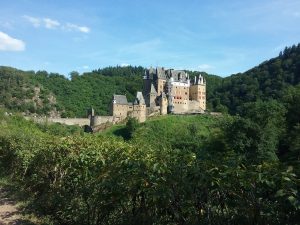
We caught the last tour and saw the schaztkammer, then had just enough time to grab an ice cream before the food counter closed at 6 pm. Our trip back to Bernkastel was uneventful but we were finally getting hungry after our late lunch in Beilstein. Surely the famous Bernkastel MarktPlatz would have restaurants open late on a summer evening!
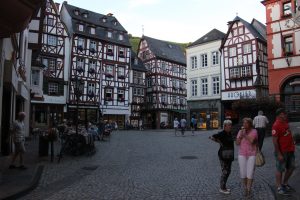
There were, but it took some doing to find one at 8:30 pm. Wilfried was astonished. He told us stories of the days of his youth hanging out in the Bernkastel downtown late. The place we found open only would serve wine in bottles at extortionate prices so we had beers. They did come up with a nice cheese plate, though!
Walking home across the bridge to Kues, we saw the moon rise over the hills and Burg Landshut. Very nice!
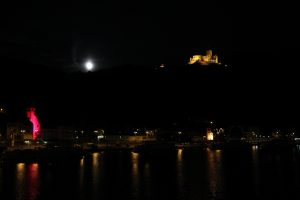
Tuesday morning it was raining so we decided to take a tour of the Cusanusstift. Nicolas of Cusa was a major figure in 15th Century in Europe. He founded in 1451 a home for old people in Kues that is still in use. Upon his death in 1464 he had his library sent to Cusanusstift. We were able to enter the library and marvel at the books dating from the 9th to the 15th Century. Behind glass, of course!
Here’s a view of the Cusanusstift from my first trip to Bernkastel in the winter of 1982:
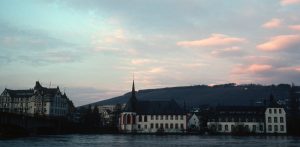
The rain lightened, so we went up the hill to the Burg Landshut. Although the castle is ruined, much effort has been made in recent years to spruce the place up and now there is a very nice restaurant with a glass wall allowing you to look over the village and still be warm. The seats were all taken so we passed on lunch there. The rain had mostly stopped so we got some nice views from the ramparts.
